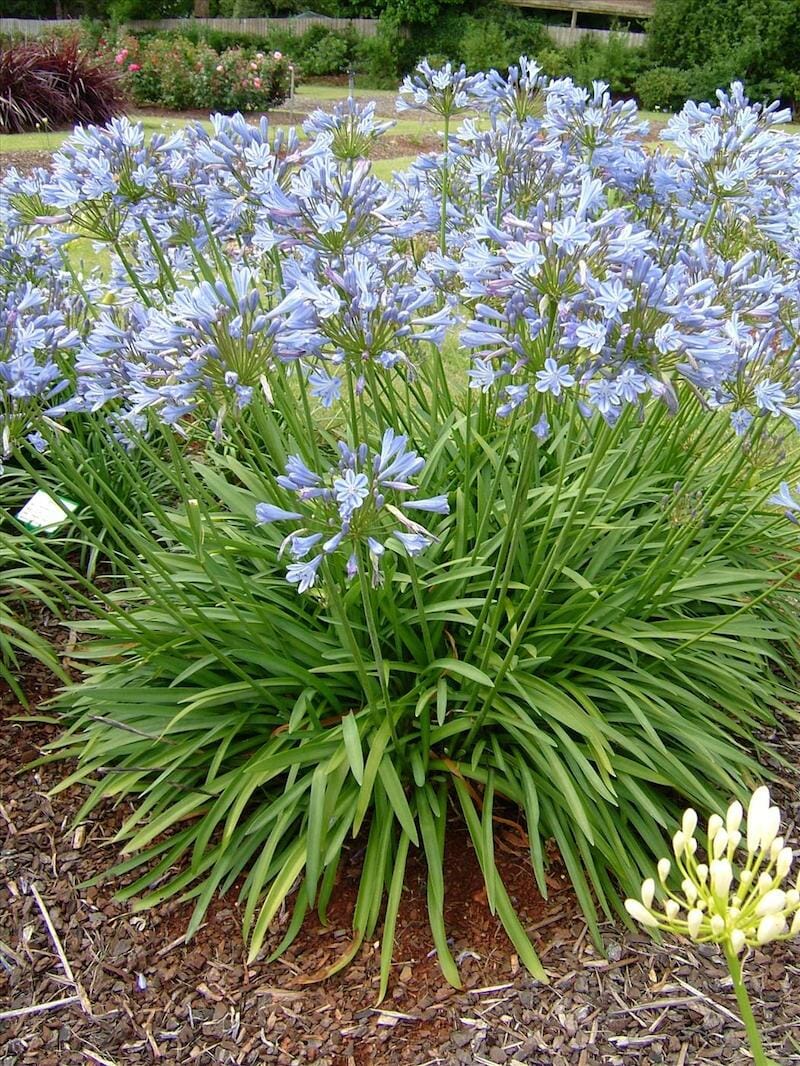Just how to Plant and Maintain Agapanthus in Your Yard
Just how to Plant and Maintain Agapanthus in Your Yard
Blog Article
Understanding the Art of Agapanthus Care: Essential Steps for Healthy And Balanced Development and Vivid Blooms
In the world of cultivation, the growing of agapanthus stands as a fulfilling endeavor for those who seek to nurture these classy blooming plants. With their striking blossoms and elegant foliage, agapanthus has captured the attention of gardeners worldwide. Nevertheless, accomplishing ideal development and vibrant blossoms needs a nuanced technique that includes numerous crucial actions. From picking the appropriate variety to mastering pruning techniques, the trip in the direction of growing growing agapanthus plants is complex and holds the crucial to unlocking the full potential of these agricultural treasures.

Choosing the Right Agapanthus Variety

When picking the best Agapanthus range for your garden, think about aspects such as climate suitability, blossom shade, and growth habit. In addition, consider the environment in your area to make sure the Agapanthus variety you pick can prosper in your details problems. Understanding the growth habit of various Agapanthus ranges is crucial for correct placement within your garden.
Suitable Planting Conditions
Thinking about the optimal ecological requirements is essential for successful Agapanthus growing. Agapanthus plants are sensitive to chilly temperatures and ought to be safeguarded from frost during winter months.
To make certain healthy and balanced development and vivid flowers, plant Agapanthus light bulbs at a depth of about 2-4 inches and space them 8-12 inches apart. Mulching around the base of the plants helps preserve dampness and reduces weed growth.
Watering and Feeding Tips
Preserving proper moisture degrees and offering crucial nutrients are crucial elements in the care routine for Agapanthus plants. When it comes to watering Agapanthus, it is crucial to strike a balance. These plants prefer consistently damp dirt yet are vulnerable to root rot if overwatered.
Feeding Agapanthus is vital for advertising healthy development and respected blossoms. Use a balanced fertilizer, such as a 10-10-10 formula, in the early springtime as new growth emerges. Repeat this application every 6-8 weeks throughout the expanding season. Stay clear of extreme fertilization, as it can bring about lush foliage at the expenditure of blooms. Always adhere to the producer's instructions for appropriate dilution and application methods. By adhering to these watering and feeding suggestions, you can guarantee your Agapanthus plants thrive and produce vibrant, resilient flowers.
Pruning Strategies for Agapanthus
Trimming Agapanthus check it out plants at the ideal times and with proper techniques is crucial for preserving their health and promoting optimum growth and blooming. The excellent time to prune Agapanthus is in late wintertime or very early spring before new development emerges. Begin by getting rid of any dead or yellowing fallen leaves near the base of the plant. Cut them as short as feasible without damaging the emerging shoots.
Deadheading invested flowers can also redirect the plant's power into creating more blossoms instead than establishing seeds. If you desire to collect seeds for propagation, leave some flowers to completely dry and mature on the plant.
Bear in mind to make use of clean, sharp devices to make specific cuts and reduce the threat of presenting illness. Agapanthus. Normal trimming will help maintain your Agapanthus looking neat and healthy while guaranteeing a bountiful display of gorgeous blooms
Handling Common Parasites and Illness
After ensuring additional info appropriate trimming strategies for Agapanthus, it is essential to resolve usual pests and diseases that can impact the wellness and vitality of these plants. One usual insect that impacts Agapanthus is the Agapanthus gall midget.
An additional common concern is fungal leaf spot, which presents as dark lesions on the leaves. To stop fungal diseases, guarantee excellent air blood circulation around the plants, prevent overhead watering, and remove any contaminated fallen leaves without delay. Furthermore, Agapanthus plants can experience from root rot if they are grown in improperly draining soil. To prevent this, plant Agapanthus in well-draining dirt and avoid overwatering. By being alert and taking prompt activity versus diseases and pests, you can aid your Agapanthus plants thrive and generate lively blooms.

Verdict
To conclude, mastering the art of agapanthus treatment involves picking the right range, giving optimal growing problems, correct watering and feeding, proper pruning methods, and addressing usual pests and diseases. By following these essential steps, you can ensure healthy and balanced growth and dynamic blooms for your agapanthus plants. Keep in mind to on a regular basis keep an eye on and keep your plants to advertise their overall health and longevity.
To guarantee healthy and balanced growth and lively blossoms, plant Agapanthus light blog bulbs at a depth of about 2-4 inches and space them 8-12 inches apart. By adhering to these watering and fertilizing tips, you can ensure your Agapanthus plants thrive and create lively, lasting blossoms.
One typical parasite that affects Agapanthus is the Agapanthus gall midge. Furthermore, Agapanthus plants can experience from origin rot if they are planted in badly draining pipes soil. By following these essential steps, you can make certain healthy development and vivid blooms for your agapanthus plants.
Report this page